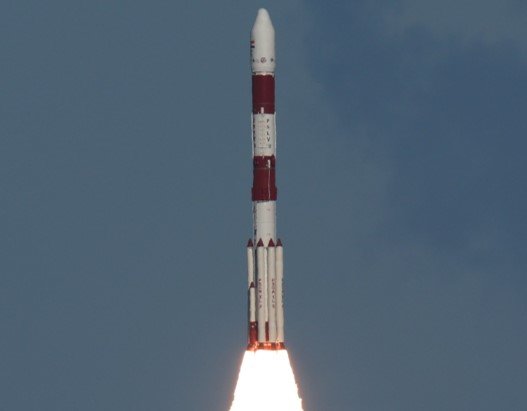ISRO Launches PROBA-3 Satellite: A Leap in Solar Observation and Space Technology
ISRO’s Achievement with PROBA-3 Launch: The Indian Space Research Organisation (ISRO) achieved another milestone by successfully launching the European Space Agency’s (ESA) PROBA-3 mission aboard the PSLV-C59 rocket. This mission, a collaborative effort involving ISRO, ESA, and NewSpace India Limited (NSIL), underscores India’s growing stature in the global space community.
PSLV-C59 / PROBA-3 Mission
✨ Here’s a glimpse of the spectacular liftoff!
#PSLVC59 #ISRO #NSIL #PROBA3 pic.twitter.com/qD3yOd1hZE
— ISRO (@isro) December 5, 2024
This marks the 61st commercial mission of ISRO’s trusted Polar Satellite Launch Vehicle (PSLV), continuing its legacy of reliable and precise launches.
What is PROBA-3?
PROBA-3, an acronym for Project for Onboard Autonomy, is a groundbreaking solar mission by the European Space Agency. The mission’s core objective is to study the Sun’s corona, the outermost layer of the solar atmosphere, with unprecedented precision.
The mission involves two spacecraft:
- Coronagraph Spacecraft (CSC) – Weighing 310 kg.
- Occulter Spacecraft (OSC) – Weighing 240 kg.
The satellites will operate in a highly elliptical orbit, reaching an apogee of 60,500 km, allowing them to maintain a formation for detailed solar observations.
Technological Breakthrough: Formation Flying
The PROBA-3 mission is a world-first in demonstrating autonomous formation flying. The two spacecraft will maintain a precise distance of 150 meters, forming a giant virtual satellite. This configuration enables the Occulter spacecraft to block the Sun’s direct rays, casting a shadow onto the Coronagraph spacecraft. This alignment allows the telescope to capture detailed images of the Sun’s corona in multiple electromagnetic wavelengths, including visible, ultraviolet, and infrared light.
Scientific Objectives
The primary goal of PROBA-3 is to observe the Sun’s corona at a distance of 1.1 solar radii in the visible light spectrum. This will allow scientists to gain insights into the Sun’s magnetic field, energy emissions, and its impact on space weather. The mission also aims to validate technologies for satellite navigation, collision avoidance, and autonomous operations, paving the way for future deep-space missions.
Beyond solar research, the technologies tested in this mission have broader applications. These include satellite rendezvous in elliptical orbits, de-orbiting debris from Earth’s orbit, and even supporting missions like Mars Sample Return. This mission will serve as a “laboratory in space,” validating algorithms and strategies for future endeavors.
After the successful launch, ESA will conduct rigorous safety tests on the two satellites to ensure seamless tandem operations. Collision avoidance maneuvers and relative navigation tests will be performed before the satellites are placed in their designated orbits.
See Also:
Cognition’s AI Coding Tool Devin Could Disrupt India’s Software Industry
Racist Tirade at LAX Targeting Indian-American Family
Cyber Monday sales projected to reach $13.2 billion
5 MBBS Students Killed in Kerala Road Accident, Car Collides With Bus
JD Vance Thanksgiving Family Photo With Indian Relatives Goes Viral
——————————————————————————-
It would mean the world to us if you follow us on Twitter, Instagram and Facebook. At Newscazt, we strive to bring you the latest news and stories from India, World, Business, Sports, Entertainment and more. Our team of experienced journalists and writers are committed to delivering accurate and unbiased news and analysis.




